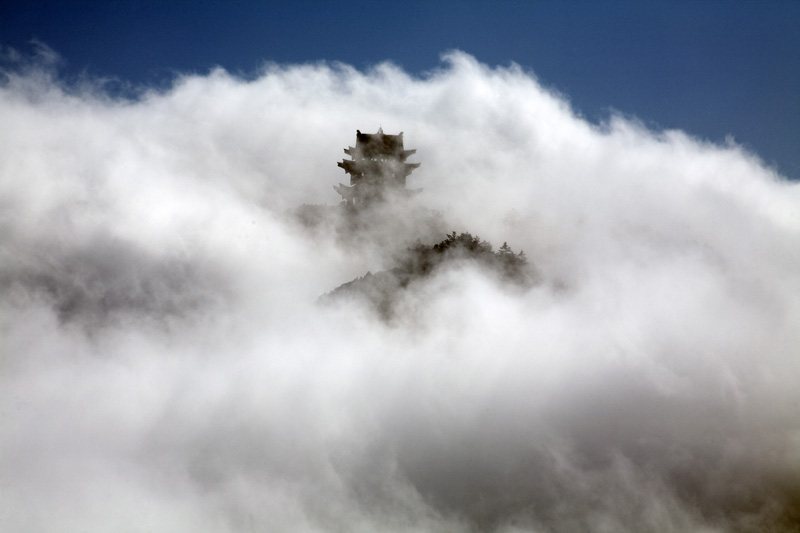Traditional Ten Views
The traditional ten views of Mt. Emei: Auspicious Light in the Golden Summit, Moon Night in Xixiangchi (Elephent Showering Pool), Nine Senior Immortals’ Abode, Snowy Daping, Drizzling Hongchunping, Baishui Temple in Autumns, Double Bridge and Qingyin Pavilion, Overlapping Green in the Ruins of Lingyan Temple, Beautiful Clouds over Luofeng Peak on Sunny Days and Evening Bell of Shengji Bell.
Affected by various conditions and environment, only seven views remains, they are : Auspicious Light in the Golden Summit, Nine Senior Immortals’ Abode, Drizzling Hongchunping, Snowy Daping, Double Bridge and Qingyin Pavilion, Baishui Temple in Autumns and Evening Bell of Shengji Bell.
Auspicious Light in the Golden Summit
This is one of the traditional ten views of Mt. Emei. The best natural scenery, made up with four natural wonders, namely, the Buddha’s Light, Holy Lamp, Sunrise and Sea of Clouds, has been longed for by people from the ancient times.
The Buddha’s Light
The Buddha’s Light is considered the appearance of Samantabhadra Bodhisattva in front of mortal people as a result of their good luck. Therefore, it is also called “Image of Light” and “Light of Treasure”. It is said that only relatively well-enlightened monks can see the Buddha’s Light. However, as a matter of fact, everyone can see the Buddha’s Light under certain environmental conditions. The Buddha’s Light is an atmospheric optical phenomenon formed in specific environment. It is mostly formed in mountainous areas with an altitude of about 1,600 m. People may see The Buddha’s Light when mist disperses and the sunlight turns up. Standing in the same direction as the sunlight (back to the sun), and forming a 40-degree angle between the sun, the cloud and mist as well as the viewer himself, he may see the Buddha’s Light. The Buddha’s Light is generally a two-meter-diameter halo of seven colors including red, orange, yellow, green, cyan, blue and purple. At the center of the halo, it is illusorily bright like a mirror, and there is a human-body-shape shadow. Sometimes, the viewer may find his own image in the halo as if looking into a mirror, and every gesture is reflected. The viewer can only see his or her own image even if a crowd of people are watching it together. The Buddha’s Lightappears and blurs in the cloud with the movement of the sunlight. It is actually the refraction of the sunlight when the sun shines on the water vapor of the clouds. Therefore, clouds, mist and slanted sunlight are necessary conditions for it to appear. That is to say the appearance of the Buddha’s Light needs sunlight and a screen of cloud and mist. The Buddha’s Light cannot form if the mist is too dense or if there is no mist at all. Even if there is cloud and mist, but the altitude of the sun is too high, then, human image cannot be reflected on the screen of cloud and mist, thus, tourists rarely see the Buddha’s Light. According to its size, shape and tone, the Buddha’s Light has different names such as Water Light, Pratyeka-Buddha Light, Fairchild Light, Golden Bridge, Clear Appearance, Reverse Appearance, Large Appearance and Small Appearance. A person in Qing Dynasty named Ding Wencan wrote in his poetWatching the Buddha’s Light: "The cloud is in five colors and miraculous lights appear. It is in the shape of Buddha beads but it is never square. What is even more extraordinary is that everyone’s shadow is hidden inside.”Every year the Buddha’s Light appears about 40 to 70 times, averaging 3 to 5 times monthly in Mt. Emei, where it appears most frequently. Most of the times it appears after 9:00 a.m. or before 5 p.m. in sunny days after a rain.

Holy Lamp
In a dark moonless night at the Golden Summit, a spot of light may appear in the darkness under the Sheshen Cliff as if produced by a firefly. Then several more spots will appear, and gradually there will be countless spots of light. Sometimes, these light spots may be bright, and sometimes they may become dim. Sometimes they gather, and sometimes they become scattered and keep floating freely. Buddhists call it “Holy Lamp”, and explain it as “tens of thousands of bright lamps worship Samantabhadra”. There are three scientific explanations for the Holy Lamp: phosphorescent light, light from fireflies, and light produced by halimasch (kind of fungus) when it reacts with rainwater. Four natural conditions are necessary for the Holy Lamp to appear. The first one is that the sun shines again after the rain at the foot of the mountain. The second is a moonless sky. The third is no mist at the foot of the mountain. And the fourth is that there is no strong wind or heavy rain at the mountain top. Therefore, Holy Lamp is even rarer than the Buddha’s Light.
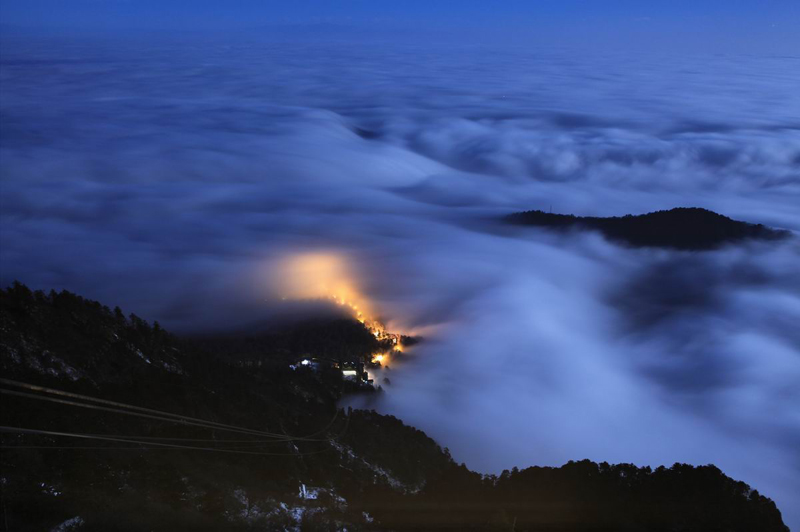
Sea of Clouds
The altitude difference of Mt. Emei is 2,500 meters, while the cloud layer usually forms between the altitudes of 1,000 meters to 2,000 meters. Therefore, it can be seen all year round above Xixiang Pool. At the Golden Summit, clouds are under the feet. Below Xianfeng Temple, clouds are above the head. At Huayan Summit, people are in the clouds. In the winter half of the year, airflow is stable and heat convection is not strong, so clouds are relatively stable and the cloud surface is smooth. As a result, only mountain peaks stick out of the cloud surface, which look like isolated islands. In the summer half of the year, vertically upward airflow is very strong, so cloud waves move up and down like blooming white flowers. Floating clouds are like surging sea waves sweeping the entire earth, moving forward with great momentum and in vast scale. In a clear blue sky, white clouds rise from countless valleys. In a moment a vast and hazy sea of clouds extends to the horizon like a snow-white flannelette blanket. It is bright, clean, thick, sleek and boundless. It looks as if it is resting or sleeping. Sometimes, a layer of clouds is over the ground and another is in the sky. When people stand between these two layers of clouds, they will have the feeling that they are walking on clouds as immortals.Fan Chengda, a Southern Song Dynasty poet, called the sea of clouds “the world of Douluo Fabric”, and Buddhists call it “the Silver World”.
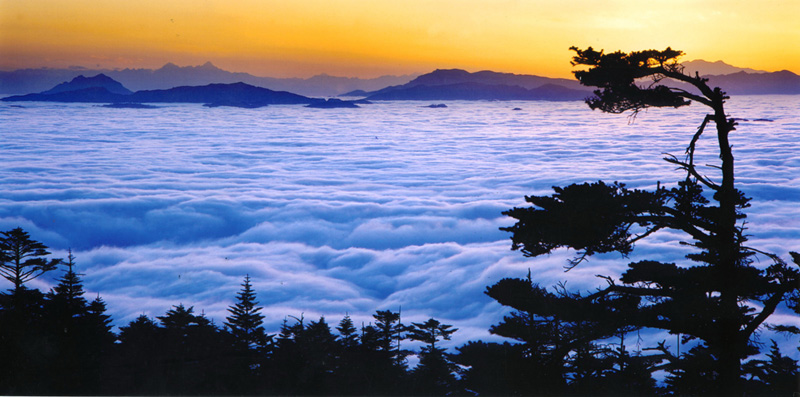
Sunrise
The sky before dawn is beautiful in the Golden Summit. In the east, the sky is blackish green, the same color as the ground. Gradually, a ray of red glow of the sun is uprising, with a couple of colorful clouds edged with golden color, indicating a glorious daytime is coming. Under the colorful clouds, a glimpse of purplish red is going up gradually, and turning to a small arc, semi-circle, turning tangerine and red; later, jumping out. In fine days, the sun rises from the horizon, and you can watch the sunrise process; sometimes, when the sun rises with clouds around, what you can see is the red sun; and in cloudy days, you can only see the morning glow and sea of clouds sometimes.

Moon Night in Xixiang Pool
Xixiang Pool, located in Zuantian Slope, 2070 meters above sea level, is the best place for watching the moon on Mt. Emei. Surrounded by tall and straight firs and overgrown bamboo, the temple, forests, and pool are more beautiful under the moonlight in summer and autumn evenings, with silver moonlight pouring on everything. Seeing the charming moon night, Libai (701-762), a great poet in Tang Dynasty intoned:”Autumn moon over Mount Emei, so like a half wheel! Your reflection in the Pingqiang with its current flows. I set out for the Three Goreges from Qingxi at night. Now, nearing Yuzhou, how much I miss seeing you!”
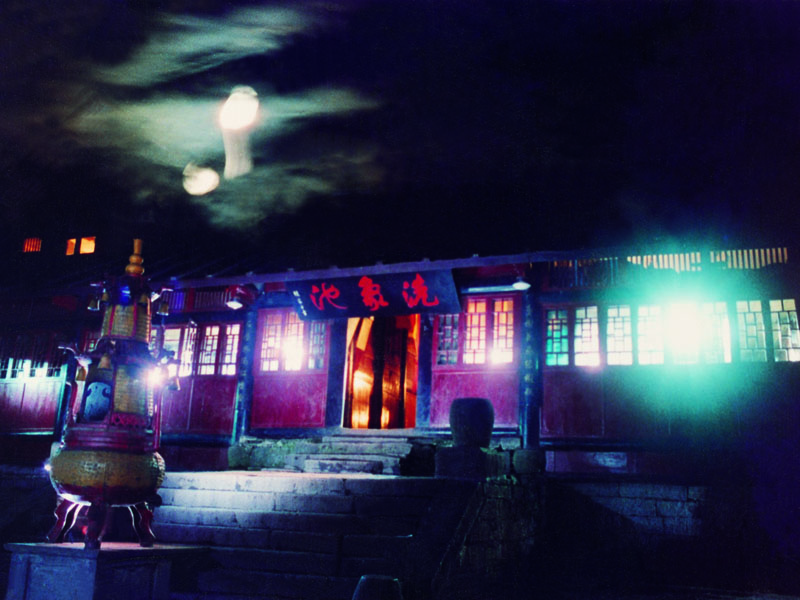
Nine Senior Immortals’ Abode
Nine Senior Immortals’ Abode is the joint name of Xianfeng Temple and Nine Elderly Cave (Jiulao Cave). Xianfeng Temple was a Taoist Temple. Five hundred meters away from there is Nine Elderly Cave. It is said that when the Yellow Emperor (2717 BC-2599 BC) visited Tianzhen (an ancient immortal of Taoism), he encountered an old man outside the cave, and asked if he had other companions. The old man answered he has nine companions. So the cave is called Nine Elderly Cave, which is also the cultivation place of Zhao Gongming, the God of Wealth in China. The cave, 4 m high and 1500 m long, is a karst cave. Walking in the cave, you will see the tunnel wall, natural karst sculpture, splendid stalagmites, columns, cave flowers and so on. In the meantime, crowds of bats and swallows add vitality to the maze. It is the ideal place for exploration.
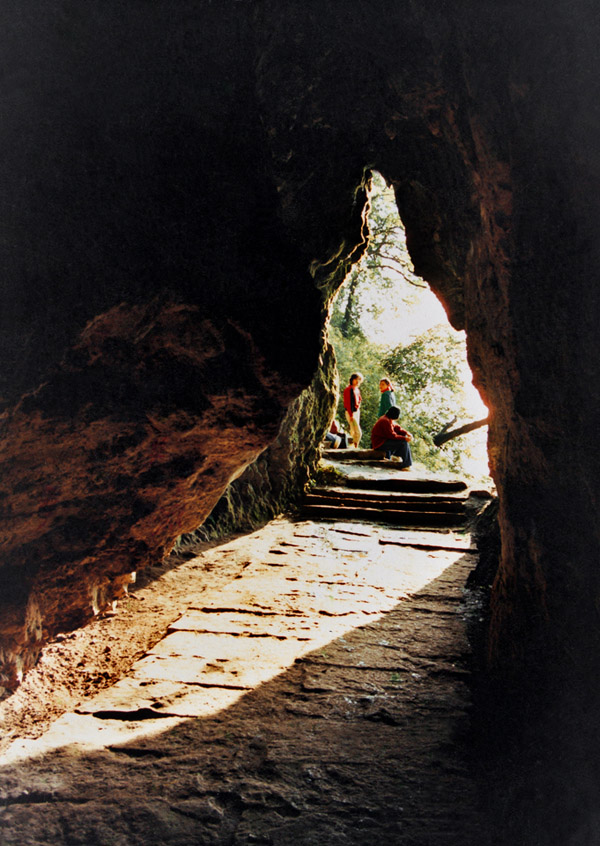
Snowy Daping
The mountain ridge in the left front of Hongchunping Temple is called Daping. Every year after the Beginning of Winter, it will be snowing in Daping, and ever green trees will be covered with white snow. In severe winter, Mt. Emei, filled with snow-covered trees, is like a silver world. Daping and the surrounding peaks form a huge snowy lotus, with Daping as the center of the flower. Snowy Daping is the concentration of the best form and color of snow in Mt. Emei.
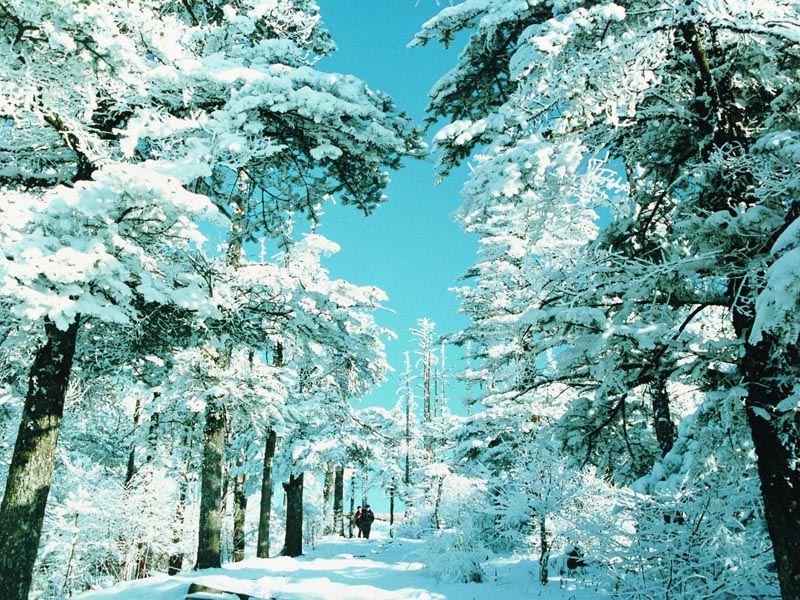
Drizzling Hongchunping
Hongchunping, in the lower place of Tianfeng Pool, is 1120 meters above the sea level. It gained the name “Hongchun” because of the three Chinese toon trees (called “Hongchun” in Chinese) outside the temple. Emperor Kangxi (1654-1722) once granted a tablet to the temple, with “forget worldly worries” on it and a pair of couplet meaning “cranes and gulls will not be disturbed here”; Emperor Qianlong (1711-1799) wrote down “washing the alms bowl with mild and warm spring, burning incense make the dawn here more quiet and beautiful”. The temple, built depending on the mountain, with trees surrounded, is quiet and secluded. The air is fresh there. In summer mornings, it often “drizzles” in the courtyard and in the surrounding forests, and you can hear the sound of “drizzle” there. This is one of the Ten Views of Mt. Emei--Rainy Hongchunping. When sun rises after raining, it is humid on the ground of the forests and the moisture is not easy to eliminate, so it will turn to drizzle at night when the air becomes cold and heavy, flowing down from the hillside and ascend the warmer air. Just as the verse goes “It is not the rain in the mountain, but the wet air that dampens the clothes.”
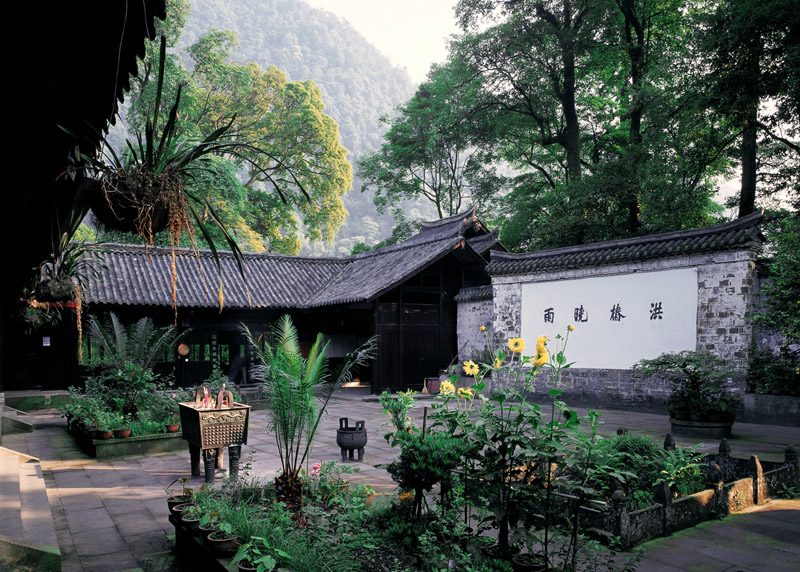
Baishui Temple in Autumns
Wannian Temple, located below Shiziling, 1020 meters above the sea level, was first constructed in Eastern Jin Dynasty (317-420). It was said that Mt. Emei is subsumed to fire among the Five Elements, so the temple was damaged each time after finishing construction. Then it was renamed Baishui Temple (White Water Temple). The temple, built on a prominent peak of the mountains, is surrounded by green trees. The scenery here is beautiful all the year around, especially in cool autumn, when the foot of Mt. Emei is still hot, and it begins snowing on the three peaks of the Golden Summit. Wannian Temple at that time is in its best season. Forests become colorful, with maple leaves turn red; fragrant laurel is blooming and frogs are singing; the surface of Baishui Pool ripples in the wind--making people happy and refreshed.
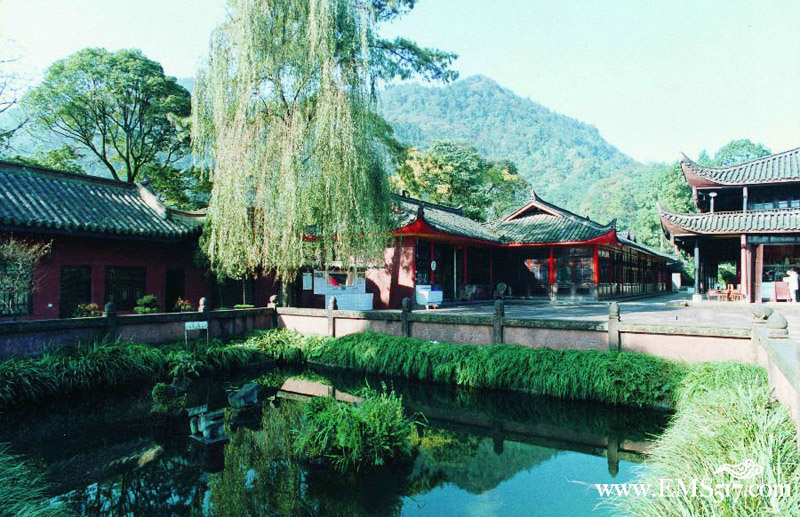
Double Bridges and Qingyin Pavilion( “Qingyin” means melodious sound)
This is one of the traditional Ten Views of Mt. Emei. Qingyin Pavilion, a unique garden-like temple, situated in the center, with pavilions, terraces and halls within 4 km., as well as green mountains and clear water forming a natural landscape painting. In the lower place of Qingyin Pavilion is Jiewang Pavilion (Emperor Receiving Pavilion), with White Dragon River and Black Dragon River on the left and right side respectively. Two rainbow-like arch bridges are crossing on the rivers. The bridges as a whole were named Shuangfei Bridges (Double Flying Bridges) as they look like a pair of wings. And the intersection of the two rivers is called Phoenix Mouth, with Ox Heart Pavilion above. Leaning against the vermilion rails and red pillars, you will see a big black rock down there, with the shape of a cattle heart. The above-mentioned two rivers flow around the rock, and the water laps against the rock and splashes about. The water lapping sounds melodious, just as the sound of Guqin (a traditional seven-stringed plucked instrument in China). Therefore, the scenery is known as Double Bridges and Qingyin Pavilion. Landscape design experts praised it as a phonic poet and three-dimensional painting. “Two rainbow-like bridges crossing on the rivers and a cattle heart situated there throughout the ages” is a vivid description of the charm of the scenery.

Overlapping Green in the Ruins of Lingyan Temple
Located at the back of Mt. Emei, Lingyan Temple was said to be the residential place of Baozhang, a monk from India. In Ming Dynasty, the temple is grand and popular, with 48 halls and flourishing incenses; however, after years of chaos caused by war and long years’ out of repair, the halls had all been ruined. But the scenery here is as beautiful as that in the past. Standing in the site of the ruins and looking into the north, you can see a natural picture composed of thousands of hills, the color of which changes from jade green to indigo, stone blue, and greyish white, extending to the boundary of the blue sky.
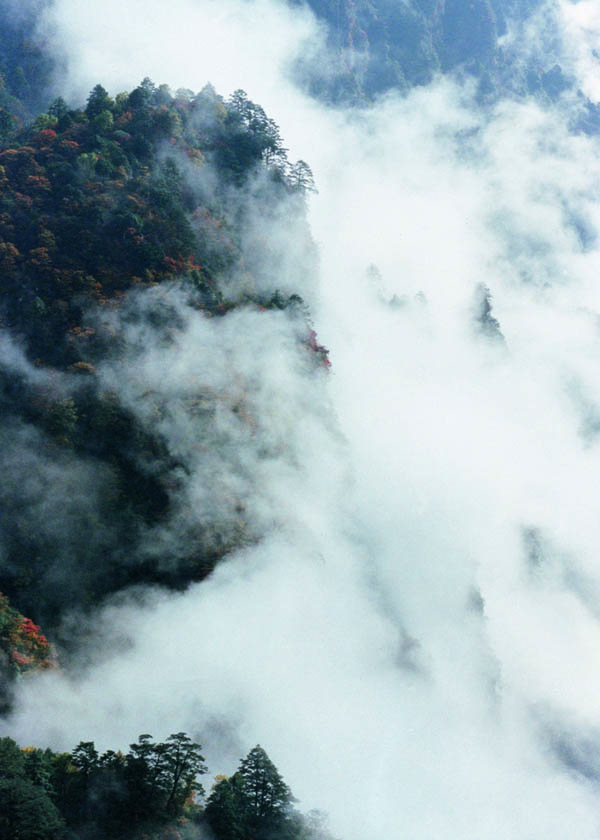
Beautiful Clouds over Luofeng Peak on Sunny Days
Luofeng Peak is on the right side of Fuhu Temple. Although it is not high, as the first peak in Emei Plain, Luofeng Peak seems high and steep. Trees are abundant in the mountain, and hills are linked together behind the peak. No matter in cloudy days or sunny days, the peak is always covered with clouds and mist. In sunny days, if you overlook Luofeng Peak, you will see the blue sky, white clouds and green hills form a beautiful picture with Luofeng Peak, which makes you relaxed and happy. There is one wonderful view called “Beautiful Clouds over Luofeng Peak on Sunny Days”. When the clouds are floating over Luofeng Peak, or moving around, the clouds and mist will expand and extend to floating clouds until they join other clouds.
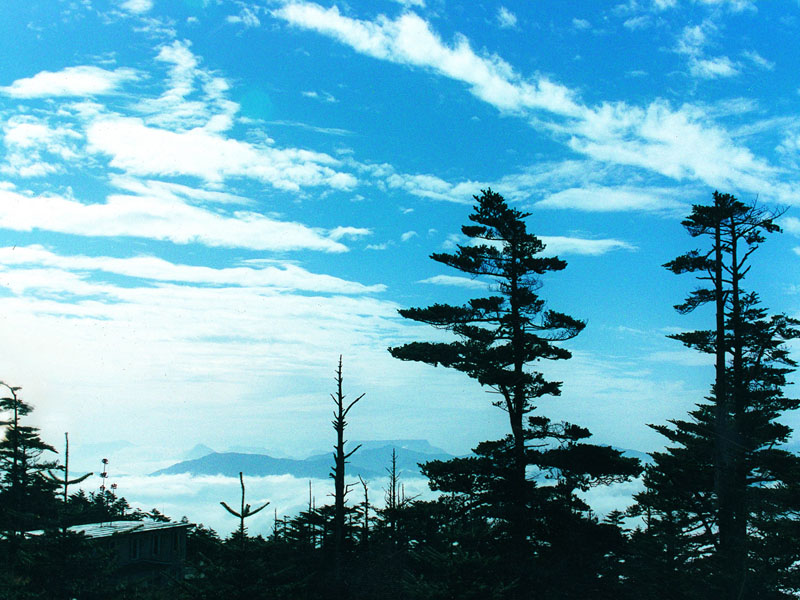
Evening Bell of Shengji Bell
It is one of the ten traditional views in Mt. Emei. Situated in Fenghuangbao, the bell was constructed in 1564, when Biechuan built the Shengji Temple. So the bell was named after the temple. Shengji Bell, which is 12.5 ton weight, 2.3 m high, 2 m diameter, and 10 cm thickness,is the largest bell in the mountain and the “King of Bells in Sichuan and Chongqing”. As each edge of the bell looks like a petal of the lotus, it is also called “Lotus Bell”. With each edge carved with the Twelve Earthly Branches “zi chou yin mao chen si wu wei shen you wu hai”, which symbolizes twelve hours in one day, the bell is named “the Eight Diagrams Bell”. About 60,000 characters including the names of some emperors from Jin Dynasty to Ming Dynasty, governors, monks and lay Buddhists andAgamawere carved in and outside the bell, providing important literal and historical documents on the research of the spread of Buddhism in Mt. Emei. In addition, the bell is cast by copper, with deep and large space within the bell, and its sounds can be spread for over ten li. A poet in Qing Dynasty named Tan Zhongyue wrote:“ Where comes the evening bell? From the ancient temple called Shengji. Although it is said that the characters of immortals are different from the normal people’s, they both agree that the belling sounds sweet and fresh.”

